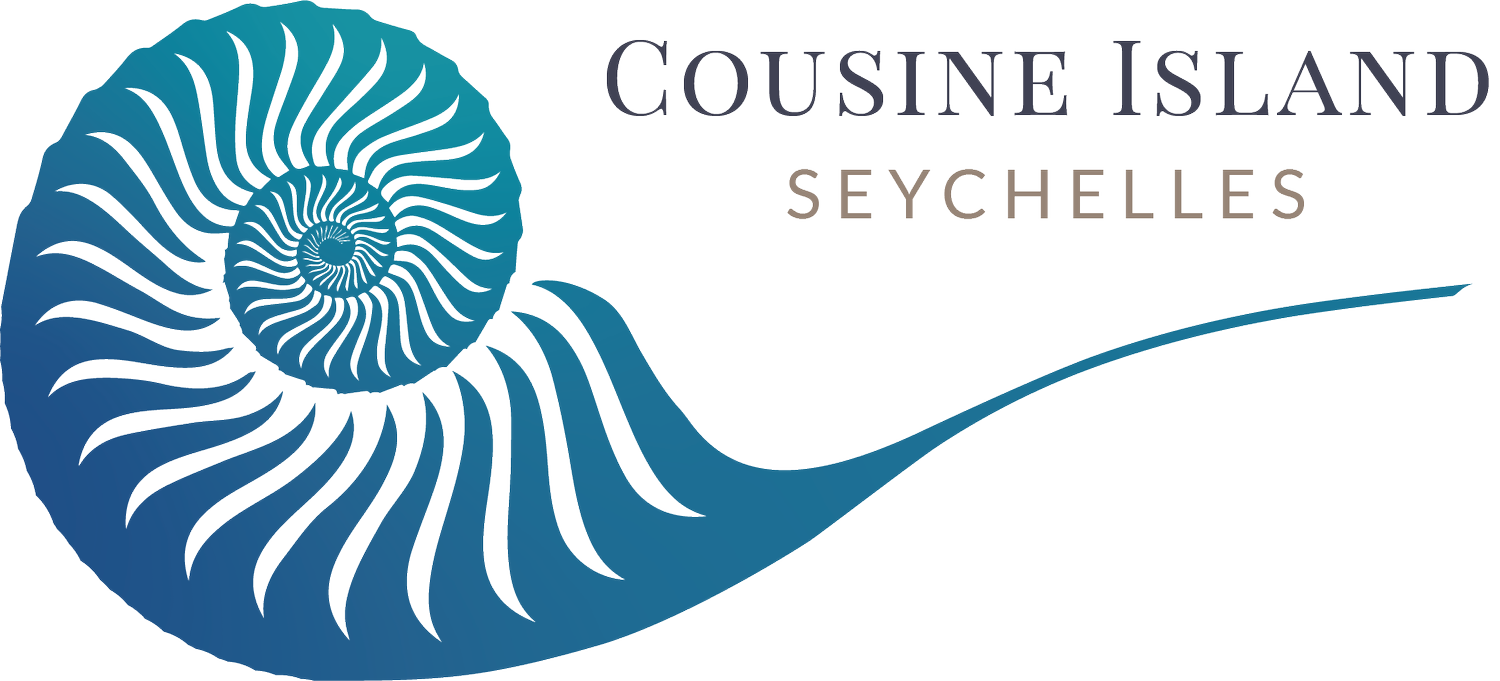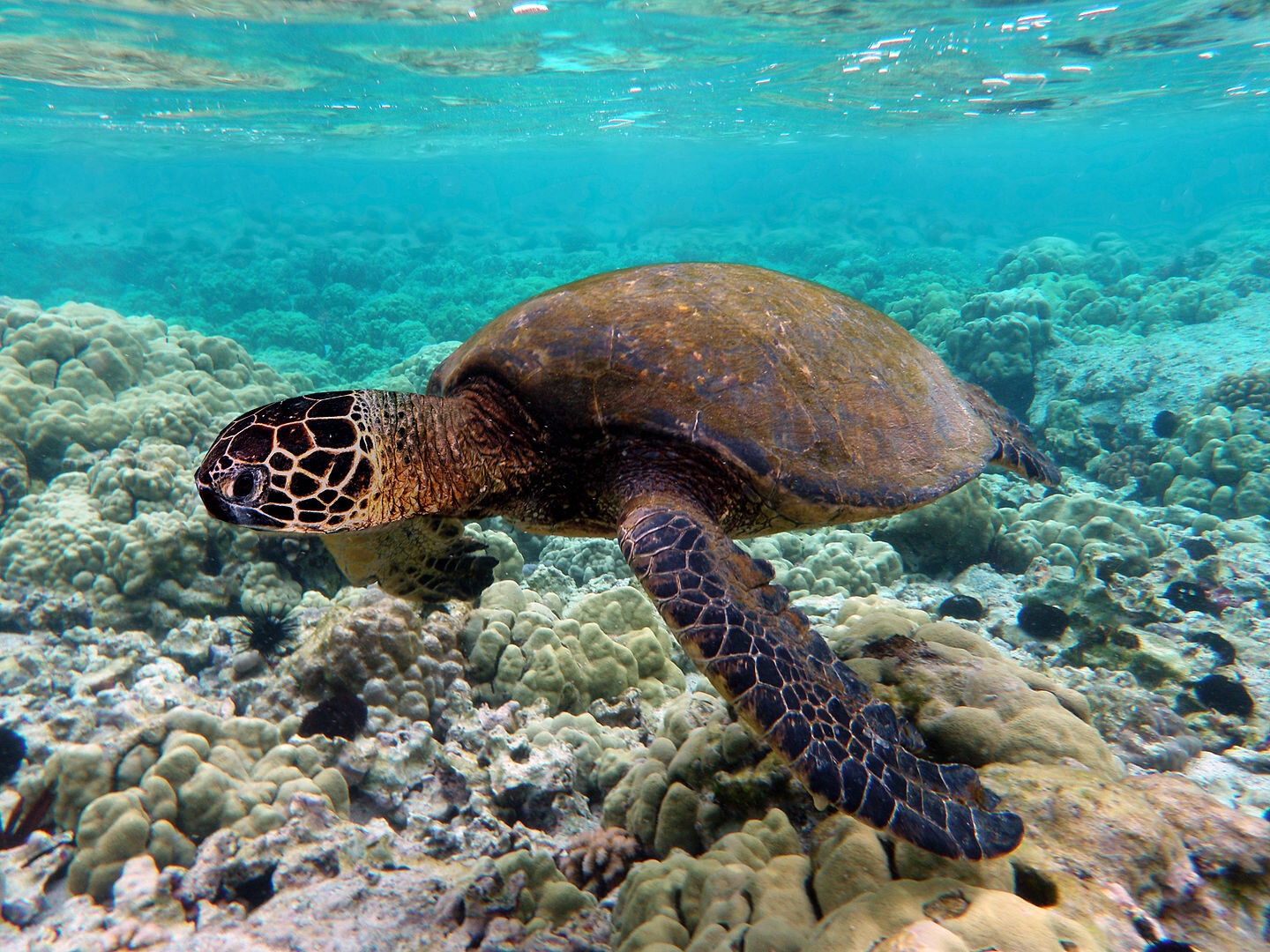Endangered Green Sea Turtle (Chelonia Mydas)
Historically many sea turtles fell prey to human exploitation. Green turtles are prized for their edible flesh and are particularly vulnerable to boat strikes, fishing net entanglement and poaching.
With the protection offered by conservation islands such as Cousine and the introduction of strict regulations banning the capture of turtles in the Seychelles, nesting green turtle numbers are on the rise. As with the hawksbills, nests and hatchlings are closely monitored on the Island.
Image by Brocken Inaglory
Green turtles are the larger of the two sea turtle species that emerge onto Cousine Island’s beach to nest (average weight: 110 - 190 kg, length: 1.5 m). The common name is derived from the green colour of their cartilage and fat found beneath their carapace, and not from the shell, a common misconception, which is olive to black in colour.
Adult green turtles are the only herbivores of all the sea turtle species, feeding mainly on seagrasses. They help to maintain the health of seagrass beds by grazing the tips of the blades of the grass.
Similarly to Hawksbills, Greens are widely distributed throughout the tropical and subtropical oceans around the world. Nesting season within the tropics occurs throughout the year, however, on Cousine Island nesting females are generally encountered between June and December. Unlike Hawksbills that choose to nest during the day within the Seychelles, female Green turtles emerge at night to nest. They too return to their natal beaches to nest at roughly 14-day intervals up to five times within a season, laying between 85 - 200 eggs each nesting attempt.
Green turtles are currently listed as “endangered” on the IUCN Red List of Threatened Species and are therefore protected from exploitation in most countries around the world.


